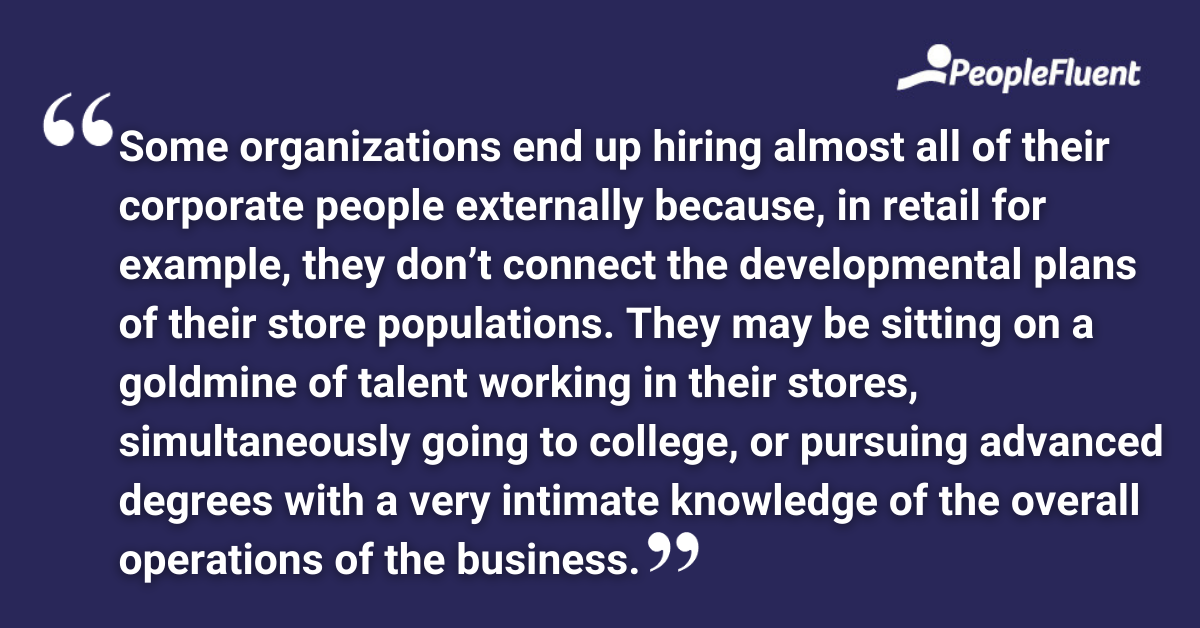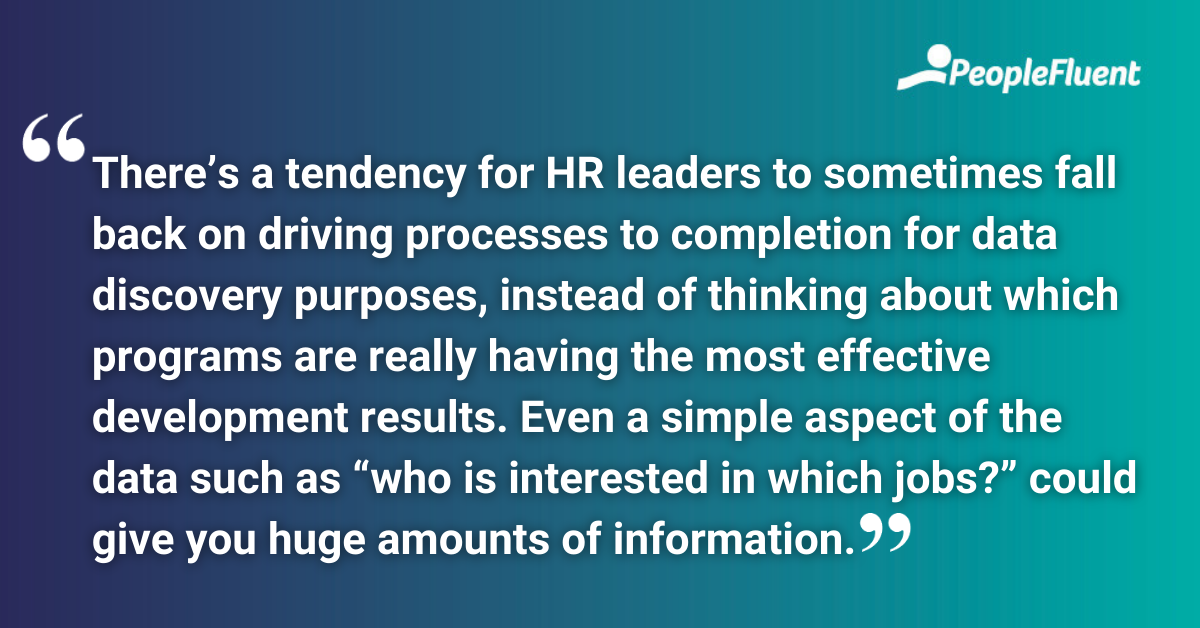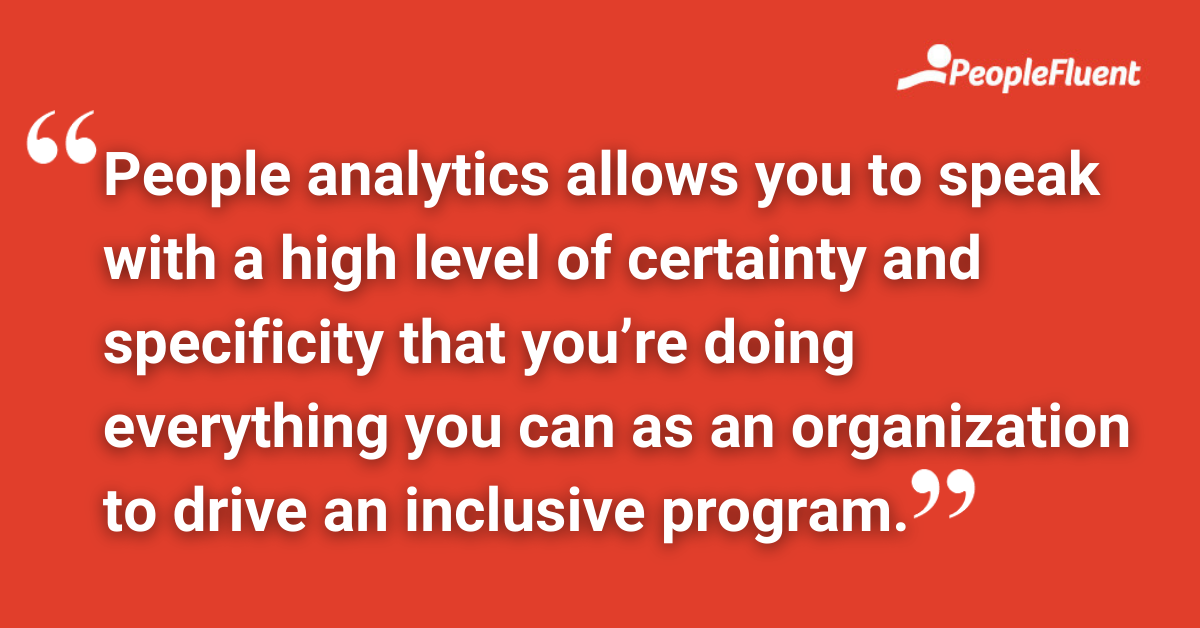Published: Mar 31, 2022Time to read: 7mins Category: Talent Management
5 Questions That Get to the Heart of Why People Analytics Matters
Organizations keep growing, and everyone’s analytical approach must scale up to cope with that growth. In this article, Stephen Bruce, PeopleFluent’s Managing Director, considers the role of people analytics in creating succession and mobility plans at various levels of the organization. He also examines what questions should be asked of the data, how data can help mitigate biases in hiring, and what sets people analytics apart from your existing data analysis approaches.
How Can People Analytics Help Build Employee Succession and Mobility Plans?
Here’s the current situation: succession and mobility planning processes vary from organization to organization. Some have emergency succession plans for key leadership positions while others are more focused on driving a high-potential pool.
What’s missing is the ability to identify individual plans for employees to develop themselves. By collecting information on workforce-level skills on a role-by-role basis, based on individual industry information, and then using that to discover workforce gaps you can start thinking about whether you’re driving specific slates. That’s whether it’s emergency successors, high-potential pools, or just your overall plan.
And once you do this, you should be asking “what is the expected outcome?”, and “how can we deliver and report on it to the management team or the board?”
YOU MIGHT ALSO LIKE | ‘6 Foundations for Effective Succession Planning’
What Should Succession Look Like Below Senior Leadership Level?
It’s important to remember there’s a broader career development aspect of succession, and that organizations should also be considering the managerial and directorship levels of their business.
Some organizations end up hiring almost all of their corporate people externally because, in retail for example, they don’t connect the developmental plans of their store populations. They may be sitting on a goldmine of talent working in their stores, simultaneously going to college, or pursuing advanced degrees with a very intimate knowledge of the overall operations of the business. However, these individuals get overlooked because the organization isn’t thinking of the broader population of employees in a succession pool, or it doesn’t have some form of high-potential or developmental pool.
In this way, organizations need to think about internal mobility developments in the same vein as succession, and they need some form of tool that helps drive those observations.

RELATED READING TO DOWNLOAD | ‘5 Steps to Getting Started With People Analytics’
What Should Organizations Be Asking of Their Data?
Proactive succession planning and internal mobility plans are critical to the employee experience. Examples of questions you really should be asking include:
- Which departments have the strongest succession pipeline? How long are successors waiting for placement?
- How many successors have been identified for each position?
- Do we have diverse succession pools for key roles?
Fundamentally, teams need to be thinking about which leadership is needed in which cultures, and which values and manager types are needed within the organization. Next, look at how the data can be aggregated, and then used to come back and foster the type of development that keeps the best and brightest within the organization.
There’s a tendency for HR leaders to sometimes fall back on driving processes to completion for data discovery purposes, instead of thinking about which programs are really having the most effective development results. Even a simple aspect of the data such as “who is interested in which jobs?” could give you huge amounts of information.
For example, are there departments, regions, and business units that few employees are interested in? That indicates an internal issue, and while succession will likely have to rely on external candidates for the foreseeable future, it’s also an opportunity to drill down and ask why that issue exists and address it.
Finally, separate from this, you need to start using data in an informed way and drill down into your process to understand what is and what isn’t working, because it won’t be the same across companies when you have large geographically dispersed populations.

HANDPICKED FOR YOU | ‘Getting the Most From Your People Analytics: 2 Key Metrics to Start Tracking’
Can Data Help Us Address People Manager Biases?
Data can definitely be used to better focus on the skills and abilities of individuals, but we also need to make sure that other data elements don’t skew the evaluation. Everything comes down to how we aggregate the data, quickly identify anomalies, and prevent adverse impact from happening. If we don’t do this quickly, it can be that much more difficult to correct it in the next cycle. People analytics allows you to speak with a high level of certainty and specificity that you’re doing everything you can as an organization to drive an inclusive program.
Organizations should be pushing towards taking away some of the discretionary aspects of management. They need to be constantly looking at driving programs and systems and tools that can identify where maybe some discretionary decisions just don’t look right considering their diversity, equity, and inclusion programs and policies.
ALSO ON THE BLOG | ‘4 Key Components of Building ‘a Data-Driven DEI Strategy’

How Is People Analytics Different From the Analytics, Dashboards, and Reporting You May Already Have?
Obviously, one big difference between a true people analytics solution (like PeopleFluent’s partnership with Visier) and the kinds of data capture that organizations may have already built for themselves, is the years of expertise and external insight we can bring. We also have the ability to correlate your best performers across regions and departments, and we can surface and help you view this far more easily than if you were to build it yourselves.
PeopleFluent’s partnership with Visier takes a question-and-answer approach. Analytics is often a loaded word: to many it means there will be math, spreadsheets, and number crunching involved and some simply don’t have that skillset. Literally anyone on your team will be comfortable with diving into the data as we have presented it, allowing key stakeholders to bypass analytics experts who could otherwise slow down your process.

KEEP READING ABOUT PEOPLE ANALYTICS | ‘3 Big Ways to Overcome Common People Analytics Obstacles’
Final Thoughts: PeopleFluent and Visier for People Analytics
People analytics has the potential to help you make better talent decisions. You want to be sure you’re able to understand performance to retain top talent, to be able to build a compensation strategy that attracts the right talent, and to combine performance and rewards so that you can build a fluid succession plan.
PeopleFluent has partnered with Visier not only because it’s the preeminent expert in the space, but also because across our own people, clients, and systems we’ve always prided ourselves on having very good individual manager-level decision views. Visier allows us to look at data across departments, regions, divisions, and business units to really understand how those individual decisions are aggregating up at company level.
If you want to know how to identify your high potential employees, how you develop your future leaders, and how you ensure the rewards your organization is providing are going to the right people, people analytics has all those answers and more.
Use enhanced succession management technology to improve your decision-making
Explore how it all works by requesting a demo of PeopleFluent Succession enhanced with people analytics features and functionality. And while you’re there, check out our handy infographic, ‘5 Ways Your Business Would Benefit From People Analytics (Plus 8 Stats That Prove Why You Should Care!).’